Bosporan Kingdom. In the cauldron of nomadic migrations
Completion fratricidal civil war and the confirmation of Eumelus on the throne did not at all mean the end of the troubled times in the life of the Bosporus kingdom. The defeat of the Scythian tribes and their retreat under the blows of the Sarmatians was another link in the chain of events that provoked one of the most serious crises in the life of the Hellenic states of the Northern Black Sea region.
The fall of Great Scythia could not remain unanswered. The tribes who did not know defeat were not going to voluntarily leave for the outskirts stories.
And the Scythians answered ...
In the middle of the XNUMXrd century BC. e. in the area of Feodosia, the fire of war broke out. Detachments of nomads over and over again made devastating raids on the rural regions of the Bosporus and Chersonesos kingdoms. The hastily erected fortifications in the area of agricultural settlements did not give the desired result, and the inhabitants of the periphery tried to escape under the walls of the cities, which, with varying success, restrained the onslaught of the barbarians.
Archaeological finds partly make it possible to understand how disastrous the situation of the Hellenes in the Crimea was at that time. All fortifications and forts found were burned. In the settlement of the Golden Plateau and in one of the necropolises of the Crimean Azov region, scientists found skeletons of people, in whose backs were found the tips of Scythian arrows.
Not only the countryside suffered, but also the cities. During the excavations of Nympheus, a passage in the defensive wall was discovered, almost completely covered with large stones, and stone cores and tips of Scythian arrows were found in the vicinity of the fortifications themselves.
The city of Pormphius, apparently, was taken by storm. And partially destroyed. After the restoration, it was turned by the Greeks into a powerful fortress with walls reaching two and a half meters in width. The restructuring and strengthening of cities as a whole was observed everywhere in the Crimean part of the Bosporus kingdom of that time.
These events suggest that by the 70s of the III century BC. e. a real war was raging in the country. Moreover, the Scythian detachments, this time were not limited to simple robber raids. Trying to burn and destroy all traces of the Hellenes' presence in these lands, they, apparently, waged war not so much for the sake of enrichment as for the sake of reclaiming living space.
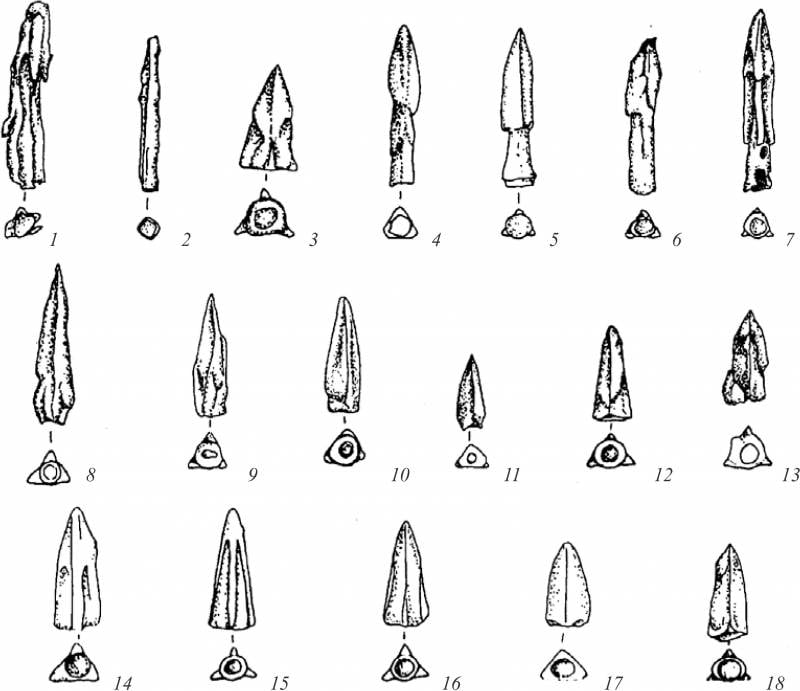
Examples of Scythian arrowheads. Source: “Military history and military affairs of the Cimmerian Bosporus. Yu.A. Vinogradov, V.A. Goroncharovsky "
An important point confirming the seriousness of the intentions of the Scythians to dislodge the Greeks from their lands is the fact that only systemic, continuous raids on the settlements of the Bosporus could have such a significant destructive effect on agriculture. Individual attacks by enemy units could not fundamentally destroy the economy.
According to Victor Davis Hanson (scientist, teacher of classical and military history at the Hoover Institute), only prolonged instability, heavy tax burden, robbery and loss of labor could permanently damage the usual way of life of the Greeks.
It is also worth mentioning the Asian part of the Bosporus (Taman Peninsula).
The situation there was, if not better, then not worse than in the Crimea. Despite close contact with sedentary barbarian tribes and nomadic Sarmatians, none of the Greek cities of Taman was destroyed. At this time, active fortification construction was not even noted here.
There is reason to believe that before the civil war of the sons of Perisad, clashes between nomads and Hellenes took place here, but by the middle of the XNUMXrd century BC. e., apparently, relations between peoples have stabilized and were more of a partnership, mutually beneficial nature.
Probably, the Sarmatians, tired of the exhausting war with the Scythians, more or less calmed down and began the peaceful development of the conquered territories, preferring not to break the ties established with the Bosporan kingdom and be content with receiving gifts and tributes.
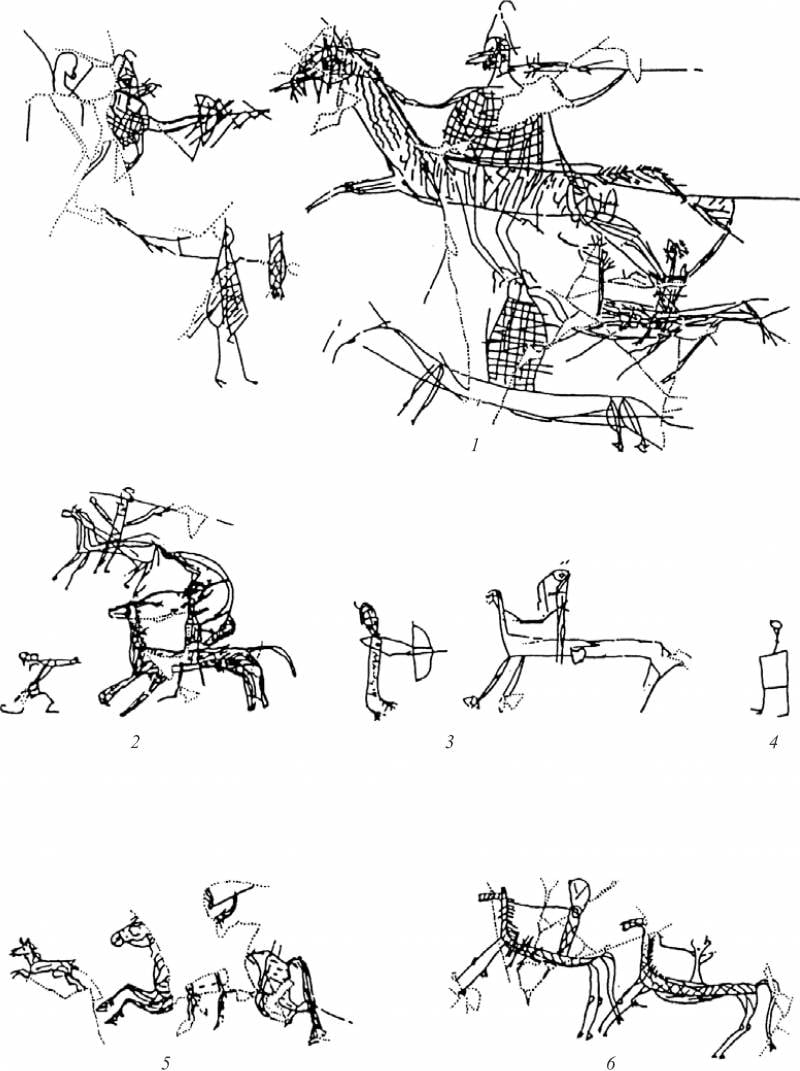
Graffiti of battle scenes on one of the walls of the destroyed sanctuary of Nymphaeus. Source: “Military history and military affairs of the Cimmerian Bosporus. Yu.A. Vinogradov, V.A. Goroncharovsky "
"A breath of fresh air" and relative calm in the northern lands of the Black Sea
Second half of III - early II century BC e. was distinguished by a significant decrease in the Scythian onslaught on the Bosporus kingdom.
It is difficult to say what caused such changes: perhaps the nomads ran out of resources to continue the war, or maybe the reason for the lull was the internal political changes in the Scythian environment and the emergence of a new state formation in the foothills of the Crimea - Scythia Minor.
At this time, the rate of growth of settlements in the Asian part of the Bosporus (Taman Peninsula) is recorded and, albeit not so intensive, but a significant process of restoration of settlements in the Crimean part. Still under the threat of a Scythian strike, the rural settlements of the Crimea were built up with an obligatory look at the events of the recent past. Now villages were erected mainly on coastal promontories, cliffs or on significant heights, with the obligatory presence of fortifications in the form of walls and towers.
Despite the fact that by the middle of the II century BC. e. the main buyer of the Bosporus grain - Athens significantly weakened and could no longer acquire goods in the same volumes, cattle breeding, fishing and winemaking were actively developing on the territory of the kingdom. Naturally, there was an increase in the production of building materials and ceramics (tiles, amphoras, dishes). Their organization can be judged by the remnants of production buildings and the stamps with which the products were marked.
If earlier the foreign trade of the Bosporus was based mainly on the export of grain, then after the crisis shocks, economic ties with the barbarian population of the Northern Black Sea region expanded significantly. The main centers of trade, as before, were Tanais and Phanagoria.
The Bosporan and Sarmatian relations for some time had a predominantly allied character. As was the case with the Scythian tribes earlier, the Greek kings relied heavily on the support of nomadic tribes, while not forgetting about the mercenary contingents and detachments of aristocratic cavalry.
Until a certain moment, this was enough to defend their own interests. The situation began to change, including when relations with the Sarmatians changed the vector.
Hordes of the Great Steppe and a new crisis
In the middle of the II century BC, hopes for a stable development of the Northern Black Sea region finally collapsed.
Since about this time, more and more groups of nomads have been rising from the depths of Asia. These movements led to the final destabilization in the steppes of the Crimean and Taman peninsulas. This was probably due to the fact that none of the emerging tribes could completely dominate the rest, and in these conditions it was extremely difficult for the ancient states to defend their independence and choose the most correct development strategy.
New nomads quickly reached the territories of the Bosporus Kingdom. A number of scientists believe that the impetus for such a massive movement was associated with the migration of Yazygs, Urgs, Roxolans and, possibly, other not yet studied tribes. Following them, newcomers appeared in the steppes - the Satarhs and Aspurgians (the latter played a very important role in the life of the Bosporus).
In parallel with the new nomadic tribes in the political arena, Little Scythia in the Crimea is becoming more noticeable. Tsar Skilur, who was established at that time on the throne, unleashed an exhausting and difficult struggle for the subordination of the Chersonesos state.
Military actions between them led to the fact that already in the second quarter of the II century BC. e. there was another destruction of Greek rural settlements in the Northwest Crimea. The ancient Greek writer Polien notes that in the war with the Scythians, Chersonesus called for the help of the Sarmatians. Perhaps there was even a military alliance between them. The writer says that a certain Sarmatian queen Amaga with a group of selected warriors made an unexpected blow to the palace of the Scythian king, killing him, and returned the occupied lands to the Greeks.

Examples of Scythian weapons. 1. A gold plaque in the form of a Scythian horseman from the Kul-Oba mound; 2-3. Bronze arrowheads; 4. Dagger; 5-7. Swords; 8, 10, 11. Copy tips; 9. Specs of copies; 12. Tip of a dart; 13. Scaly carapace; 14. Bronze helmet of the Kuban type. Source: “Military history and military affairs of the Cimmerian Bosporus. Yu.A. Vinogradov, V.A. Goroncharovsky "
Whatever it was, but the Sarmatian-Chersonesos union turned out to be fragile.
In the end, the Greeks were unable to resist the Scythian onslaught. Archaeological excavations show that in the middle of the XNUMXnd century BC. e. Scythian fortresses were built on the ruins of some Greek fortifications. Moreover, for Chersonesos Tauride every year the situation was getting worse. By the end of the century, the possessions of the Hellenes were limited only to the immediate vicinity of the city-state.
For the Bosporus state, the destabilization of the situation in the Northern Black Sea region also had a very serious impact.
The start of this crisis period was probably associated with some kind of internal political changes, after which a certain Hygiene appears on the political arena. If the connection of the previous rulers of the Bosporus with the Spartokid clan did not raise any special questions, then the opinions of the researchers regarding it differ greatly.
It is also curious that on the few coins found with his image, Hygienont has the title of archon (ancient Greek - chief, ruler), and not a king, although the royal title for the rulers of the Bosporus was by that time a common thing. The same gold and silver coins depict Hygienont galloping on horseback, which, according to scientists, may mean some important victory for the kingdom, won by him on the battlefields. Nevertheless, this success (if there really was one) could no longer save the country from new catastrophic upheavals.
According to the testimony of the ancient Greek historian Strabo, in those times of crisis, all possessions of the Bosporus in the Kuban region were completely lost on the territory of the kingdom.
Already by the middle of the XNUMXnd century BC. e. most of the Greek settlements of the Taman Peninsula were destroyed and burned. The Meotian tribes left the kingdom at the same time.
It is also interesting that to date, archaeologists have not found a single burial mound dating from the second half of the XNUMXnd - early XNUMXst centuries BC. e. This situation is considered unique for the region, since from the XNUMXth century BC. e. this has never happened here.
The lack of rich burials is another confirmation of how difficult and unstable the situation was in the Asian part of the Bosporus at that time.
It is worth noting the opinion of some researchers who believe that the crisis of the period under review is associated, first of all, not with external intrusions into the habitat of the Bosporus, but with the internal social struggle of the state, expressed in the desire of a number of subordinate tribes for independence. However, this version of the development of events did not find a wide circle of supporters.
On the European side of the kingdom, destabilization manifested itself later in a slightly different form. There was no massive destruction of settlements, however, according to Strabo, an active activity of sea robbers - Achaeans, ridge and geniochs - began near the coast.
Equipping flotilla such "Kamar" and attacking either merchant ships or even some country or city, they dominated the sea. "
After the campaigns, they returned to their native places (north-west of the Caucasus), but since they did not have convenient parking, they loaded the boats on their shoulders and carried them into the forests in which they lived. Before the new robberies, in the same way, pirates brought Camaras to the shore.
Describing the specifics of the life of sea robbers, Strabo notes that sometimes they were assisted by the Bosporan rulers, providing parking in the harbors and allowing them to buy provisions and sell the loot. Considering that in the earlier times of the life of the kingdom, Eumel fought mercilessly against piracy, it can be concluded that the situation in the region has changed in the most radical way. And the kings of the Bosporus were forced to take such measures.
The economic crisis that followed external shocks had catastrophic consequences, which affected, first of all, the state of the treasury of the Bosporus kingdom. The lack of financial resources naturally affected the country's defense capability. There were not enough funds for the maintenance of the mercenary army, the squads of neighboring barbarian tribes also did not want to defend the interests of the Spartokids for free, and, in general, friendly relations with the barbarian aristocracy always cost the Bosporus considerable funds. In the second half of the II century. BC e. the money needed for this was no longer there.
As for the payment of tribute and the level of relations between the Bosporians and their neighbors, there is no consensus among scientists today. Earlier in the writings of researchers there was an assumption that the tribute was paid to the Scythians. However, some experts are now inclined to believe that tribute and gifts were still paid to the Sarmatians.
The relationship between the Bosporus Kingdom and Scythia was based on other features.
The documents found and studied of that time suggest the closest alliance of the Hellenes with the Scythians. The record says that the husband of the then Scythian princess was a certain Heraclides, who was clearly not an ordinary Greek and had a high status position in the Bosporus kingdom.
The idea of dynastic marriage can be confirmed by the fact that this case is not the only one in the recorded history of the kingdom. Quite the opposite. Already from the second quarter of the II century BC. e. there is a certain tradition of concluding dynastic Bosporan-Scythian marriages.
Probably, these actions were aimed at a joint confrontation with the aggressively minded Meoto-Sarmatian tribes of the Azov Sea, which significantly changed their vision in relations with neighboring Greek states.
By itself, the union of the Bosporus kingdom with Lesser Scythia did not mean at all that the Bosporians did not pay tribute to the Scythians. Most likely, it was expressed in some of the hidden forms: gifts, benefits, special honors, etc.
Сonclusion
The period from the middle of the III - the end of the II century BC. e. for the Bosporus kingdom turned into a series of severe crises and events that largely influenced the fate of the region.
Despite all the attempts of the ruling dynasty of Spartokids to retain power, wars, internecine conflicts and the invasion of new groups of nomads led to the fact that the last representative of the ancient clan Perisad V transferred (through formal adoption) power to the Pontic king Mithridates VI Eupator. (We will definitely tell you about it in subsequent articles).
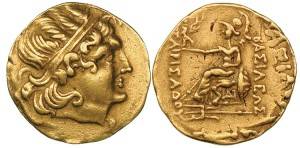
Image of Perisad V on a gold coin. Source: wikipedia.org
The clan that ruled for over 300 years collapsed.
Thus opening a new page in the history of the Bosporus.
Sources:
1. V.F. Gaidukevich "Bosporus Kingdom" Moscow. Leningrad. 1949
2. Yu.A. Vinogradov, V.A. Goroncharovsky "Military history of the Bosporus kingdom" Publishing house "Lomonosov". 2017
3. V.M. Zubar, A.S. Rusyaev "On the shores of the Cimmerian Bosporus" Publishing house "Stilos". 2004
4. Strabo. "Geography" Book XII "Reprint reproduction of the text of the 1964 edition" "Ladomir". 1994
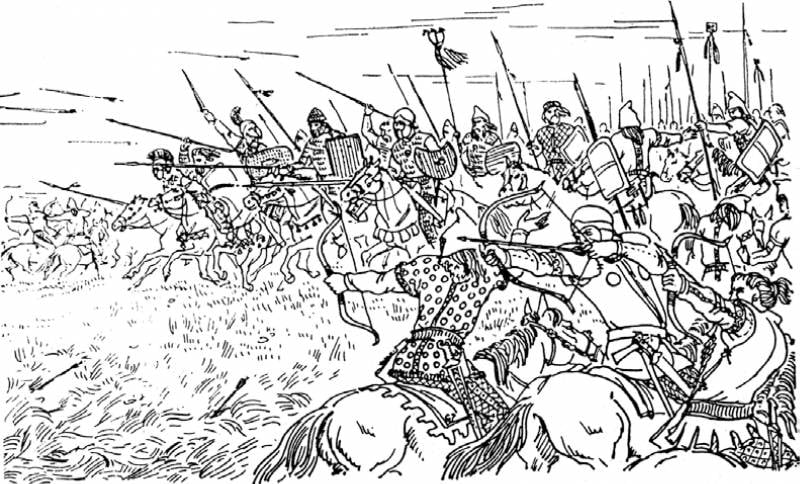
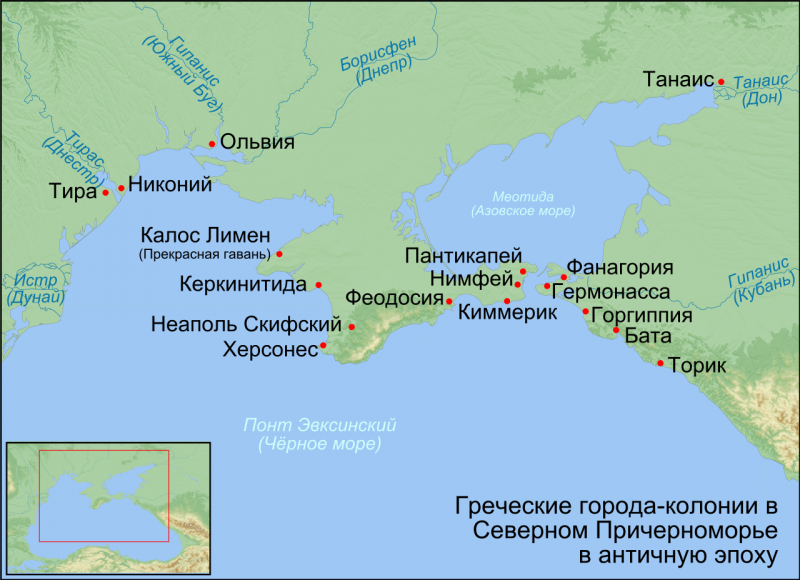
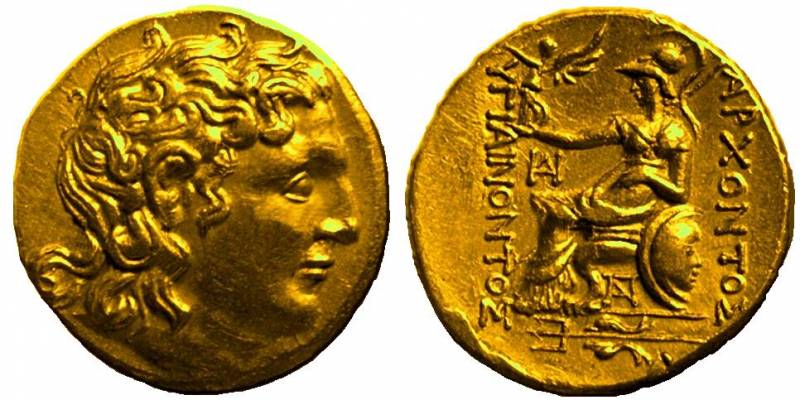
Information